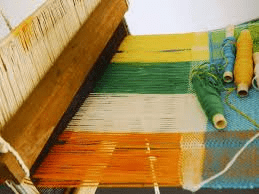Indian textile exports can hit $65 billion if industry heads take the right decisions and there is proper execution of government schemes, a joint report by global consulting firm Kearney and The Confederation of Indian Industry (CII) said.
Exports declined by 3% during 2015–2019 and by 18.7 percent in 2020, the report observed and went on to add that during the same period, other low-cost countries such as Bangladesh and Vietnam have gained a share.
“The high cost of capital and high reliance on imports for almost all textiles machinery makes it difficult to earn the right return on invested capital, especially given India’s slight cost disadvantage. Longer lead times than for Chinese manufacturers make India uncompetitive, especially in the fashion segment. For example, India’s lead time is 15 to 25 percent longer than the competition in fabrics. Limited presence in the global trade of man-made fiber products. The trend of nearshoring in western economies has not helped either,” the report suggested.
“Covid-19 has triggered the redistribution of global trade shares and a recalibration of sourcing patterns (“China plus one” sourcing), providing a golden opportunity for Indian textiles to stage a turnaround and regain a leadership position as a top exporting economy. We believe India’s textile industry should target 8 to 9 percent CAGR during 2019–2026, driven by domestic demand growth and significant growth in annual exports (reaching $65 billion by 2026)” Neelesh Hundekari, Partner and APAC Head of Lifestyle Practice at Kearney said.
Achieving the $65 billion export target up from $36 billion in 2019—will require India to double down in the five key areas – apparel, fabrics, home textiles, man-made fiber, and yarn and technical textiles.
The path to achieving these targets will entail both government and industry taking crucial steps. And the government seems geared up for the challenge. “The recent launches of multiple schemes such as MITRA, PLI, RoDTEP highlights the strong government focus on this sector. It will be critical for the government to follow up these launches with efficient implementation and even more critical for industry players to leverage these schemes effectively,” Jain said.

